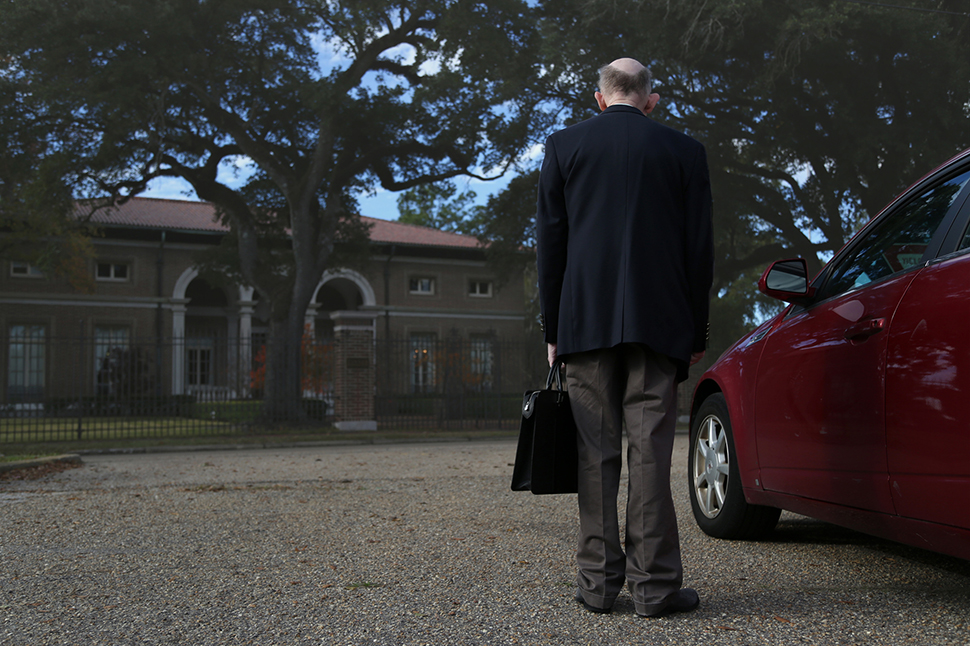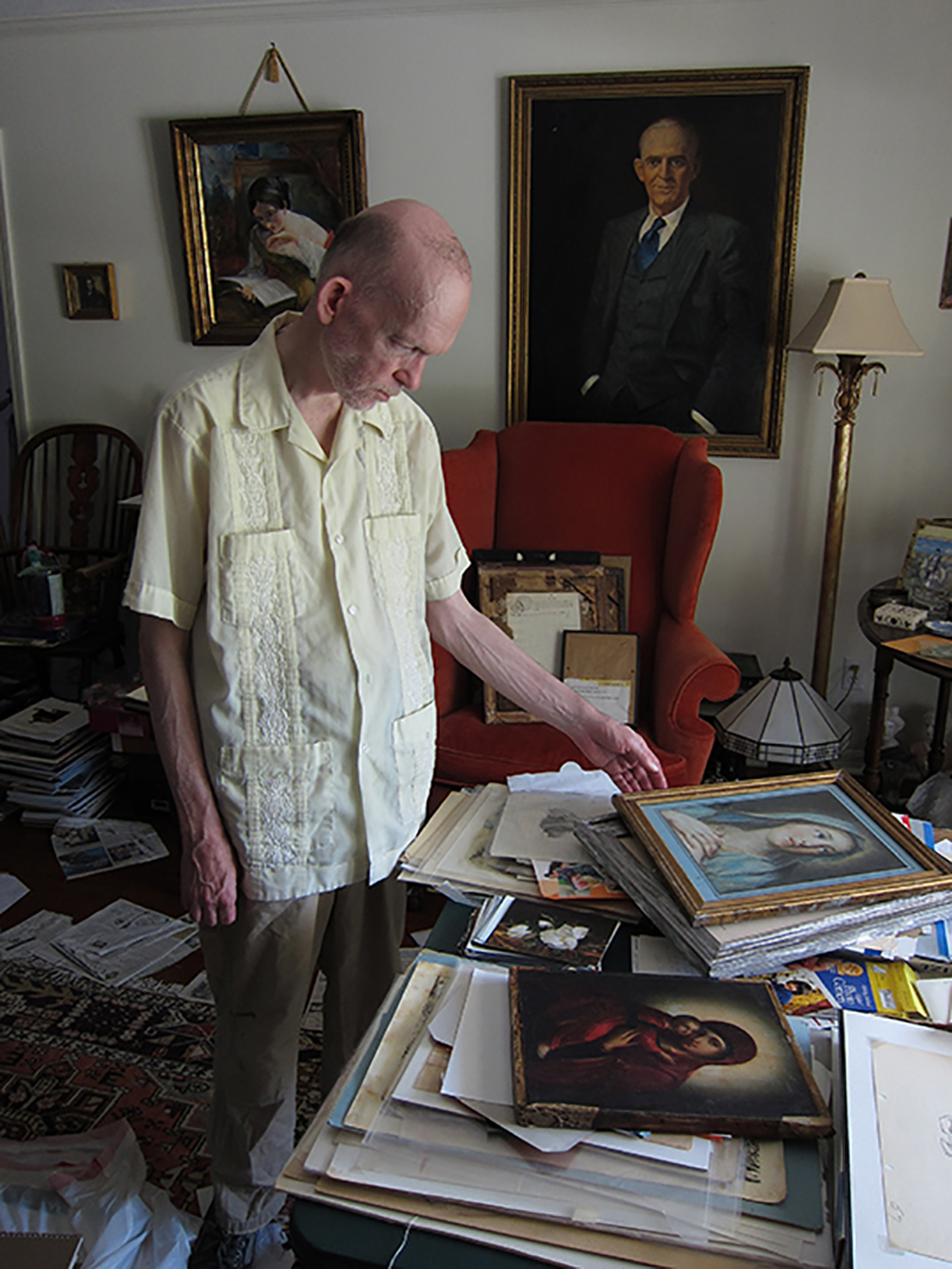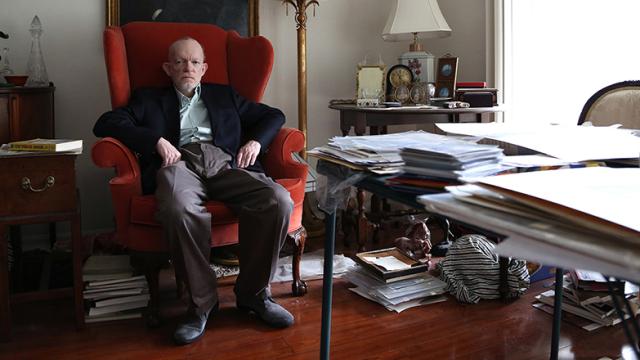Mark Landis is a small, soft-spoken, 59-year old man living in small-town Mississippi. For three decades, he used plain old coloured pencils, magic markers, and acrylic paints to replicate — like, exactly, uncannily replicate — masterworks by everyone from Picasso to Walt Disney while hunched over an unmade bed in his cluttered apartment, watching old films on Turner Classic Movies.
He could usually finish a piece in the time between opening and closing credits. He’d bang up the sides and strategically spill instant coffee on the back to mimic the effects of ageing. He would then assume an alias, complete with elaborate personal backstory (and occasional Jesuit priest getup), and gift these forgeries to museums as if they were the real deal. He felt he was a kind of philanthropist, but the people he fooled — and he fooled a lot of smart folks at a lot of big institutions — saw him as a forger, and a criminal. Because he wasn’t asking for money, though, the onus was on the institution, some of which displayed his works on the walls before finding out the truth.
Art & Craft, a new documentary, offers a glimpse into uniquely creative life of Landis the savant, and Matthew Leininger, a registrar at the Oklahoma City Museum of Art who first sussed out Landis’s indiscretions using little more than a blacklight and magnifying loupe — then doggedly pursued him for years in an effort to curb his unsolicited gifting. In 2012, an exhibition was held featuring a huge selection of Landis’s work at the University of Cincinnati, with Landis as the guest of honour, and Leininger there to shake his hand.
It’s tough not to see the duo as a kind of live-action Looney Tunes match-up, with Landis’s wily roadrunner consistently confounding Leninger’s Wile E. Coyote. I had the chance to talk to both of them about their work, and the (non-ACME approved) tools of their respective trades as producer and deducer. One of the most fascinating things I learned was just how low-tech their approaches were; both used off-the-shelf goods — from Hobby Lobby to Home Depot — but do admit to the internet as being a major boon in both their fields for (predictably) different reasons.
Gizmodo: You use what you call a “memory trick,” where you flip quickly between your blank sheet of paper held above a copy of the original work. Has your process evolved much since you first remember developing it at age eight?
Mark Landis: If anything it’s not as good as when i was a teenager, because of, you know, all the help you get with the computers and technology. I’m nowhere near as good at drawing as I used to be.
The film shows how you occasionally Xerox images and actually just paint over them. Tell me a bit more about how technology has changed your process.
Landis: Oh it’s made an immense difference. First of all, museums only collect certain things; being able to find out exactly what any particular one wanted was a big help. And a lot of the time when I had to depend on books or art and auction catalogues for inspiration, everything was in black and white, so I had to guess on the colours.
Do you prefer having the full-colour now or did you like the challenge?
Landis: Oh I’m lazy. If there’s any such symptoms for Attention Deficit Disorder, I’ve got them. I’ve got to get stuff done really fast, so if there’s something that makes easier to get it done more quickly, that’s what I like, definitely.
One of the most interesting things about the film is how you are able to completely transform the output of these super basic art tools.
Landis: Well, you can simulate brushstrokes and watercolors with the Magic Markers they have now. It’s a lot faster and easier. Cleaning the brush and when you change colours and what have you can be so time consuming, you know.
Anyways, I’ve got a good joke for you: “Gee, I didn’t know Rembrandt used acrylics.” [ note: This joke was followed by a very weighty pause before I finally got it.]
You know the important thing is what you see. It doesn’t matter if it was acrylic if it looks like it was done in oils. You don’t x-ray people when you met them, do you? Of course not.
Speaking of x-rays: Has the technology that museums have to survey artworks impacted your work?
Landis: You’ve kind of got me on that one, because I don’t know a thing about it. I usually only cared about doing enough to pass superficial inspection; I was usually long gone by the time they got around to doing that kind of stuff. It’s just something I never really thought about.

Did you ever get anxious when you would go present these paintings? It’s almost a bit like performance art.
Landis: I’ll tell you what used to make me nervous was getting to the place. Because there’s so many things that could go wrong with the travelling, and I’m not that good a driver. I used to take buses when I was younger all over the place; I remember sleeping in the airports. Gee, just all kinds of adventures.
Will you still be able to give these paintings away now that people are so familiar with you?
Landis: Well, the door of opportunity opens both ways. Plenty of things have happened to keep me busy. Ladies have me paint their children and grandchildren, and various churches and charities have let me do things for auctions. And a couple of museums have wanted me to copy paintings for fundraisers too. I got to do a really nice little Winslow Homer of a little girl picking flowers in a field. I like stuff like that. I like Victorian artists best. The sappier the better.

So you’ve been enjoying all this attention and appreciation for the work you’ve been doing the past 30 years?
Landis: Oh sure. And undeserved praise is always the best kind.
And now for a word from Matt Leininger.
You first discovered something was off about Mark’s donations when you were a registrar at the Oklahoma City Museum of Art. Tell me what your role was there?
Matt Leininger: A registrar manages a museum’s art collections, and the care and the upkeep of the artwork: to make sure it’s all stored, crated, exhibited, and lit properly. We’re basically the heartbeat of the collecting institution. If something goes wrong with a piece, it goes right back to the registrar because they’re ultimately responsible.
So you’ve got a lot riding on your shoulders?
Leininger: Big time.
You first pursued the idea that Mark’s art wasn’t authentic with a Google search — the same painting was already in a handful of other collections — and got even more feedback after you sent out an email on a registrar listserv.
Leininger: If it wasn’t for the internet, it would have taken me a lot longer to get where we’re at now — and we might not even be talking today.
What tools did you use to follow up on those original suspicions?
Leininger: The first thing I did was look at the oil and panel by Stanlislas Lepine underneath a black light and it just glowed white wherever he didn’t paint over it. Then I looked at it through a magnifier and you could see the pixels from the reproduction underneath. So I started examining other pieces he gave to the museum using my basic senses. I smelled things; the linseed oil that was on Lapin still smelled fresh — if this thing was truly from the late-19th century you shouldn’t have any scent at all. He distressed the boards so they looked old, but you could see the same markings all around the wood panel. So I was like: “OK. This has been messed with.”
Is there any other standard gear in a registrar’s toolbox to verify authenticity?
Leininger: Big museums with huge budgets have conservation departments and conservators on staff who get paid top dollar, along with high-tech microscopes and tens of thousands of dollars worth of spectrometers. It just goes on and on. Oklahoma City didn’t have that — at all.
Do you feel like that’s a major disadvantage?
Leininger: Well, when I look back at the that first day I found Landis I think: ‘Wow. I discovered the most prolific forger in all of art history with a magnifying glass and a black-light.” And that’s all it was, along with my senses — sight, smell, and touch — and my curiosity.
What happens to an artwork that’s been accepted by a museum, then found to be a fake?
Leininger: Getting rid of something is actually a very involved process, and the number one thing is you have to try to return it to the original owner. When word started spreading and people really started to believe what I was finding out, they were like: “What should we do? Should we throw it out? Send it back?” I said: ‘Don’t give it to him, because then it’s just going to end up someplace else. If nothing else, keep it in your collection for an educational tool.’ I imagine these institutions are probably grateful that they held onto Landis’s forgeries because of how amazing this entire con has been.
And now, with all his publicity, they can present it again as an authentic Mark Landis.
Leininger: Absolutely. Absolutely. This is going to go down in art and museum history, and there are already lessons to be learned for people who are just coming onto the scene: curators, registrars, directors, everyone. If they didn’t believe it then, they will believe it now, because it’s all out there for the public to see. Plus it’s making my job a hell of a lot easier to get the word out on tracking him. You can’t make this stuff up.
Are you and Mark talking now?
Leininger: On and off, yeah. I do want to stay in touch — if nothing else to keep tabs on him and make sure he’s not getting back out there again.
